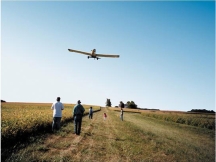Last winter’s cover crop season was disappointing, said Nick Bowers, a pioneer in the cover cropping revolution and a partner in the Oregon-based KB Seed Solutions.
Even though newer varieties of annual ryegrass are hardier in tough weather, the winter of 2013/2014 was “the worst in 25 years,” he said. “When you have winter wheat and cereal rye not surviving a winter, you know it’s been severe, and that’s what we saw last year.”
Nonetheless, his sale of cover crop seed hasn’t been hit too badly. And that’s because of two things:
- The popularity of cover crops has continued to attract farmers trying cover crops for the first time, even as some disappointed by their first try may decide to step back a year or so before trying it again.
- The number of seasoned cover crop users has also continued to grow. Even though they may not see 2014 as a good year for their cover crop, they’ve seen plenty of evidence of its cumulative value to push forward…taking 2014 in stride, knowing that cover crops won’t be a winner each and every year.
“Those who’ve been in the cover crop program for more than three years are sold…they’ll never quit,” Nick said, “because they’ve seen the benefits in better crop yields and improved soil conditions.”
His advice to new adopters of cover crops has always been to “be cautious, start simple.” He worries that with new government incentives offered, growers will jump in without enough information or experience. He suggests planting small plots of cover crops and check strips, so as to compare results side by side in a field.
But those farmers with whom Nick has been working now for over seven years all tout the virtues of staying with the cover crop effort. “One guy who had years of erosion problems was saying that the water leaving his fields is now cleaner than when it arrived,” he continued. And that’s only the beginning of the benefits, Nick said.

